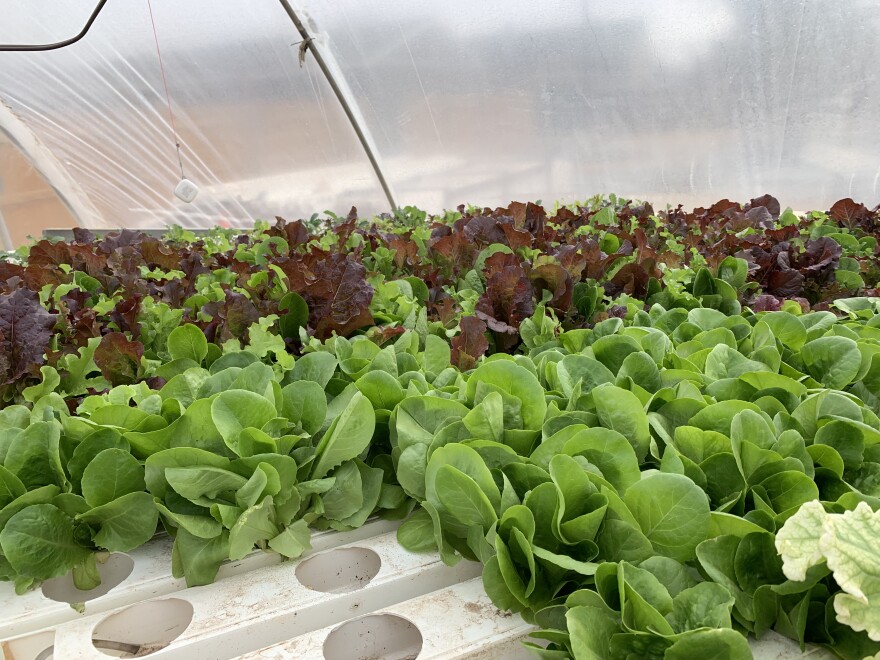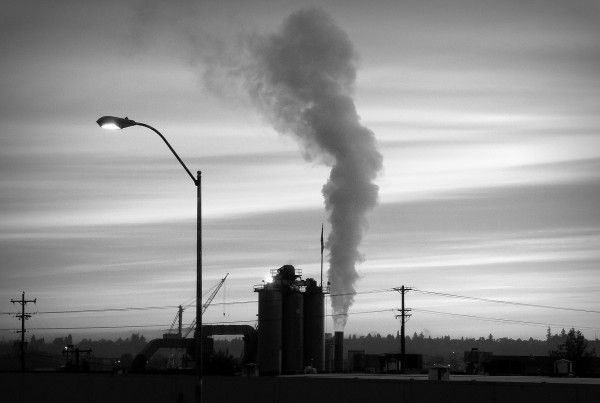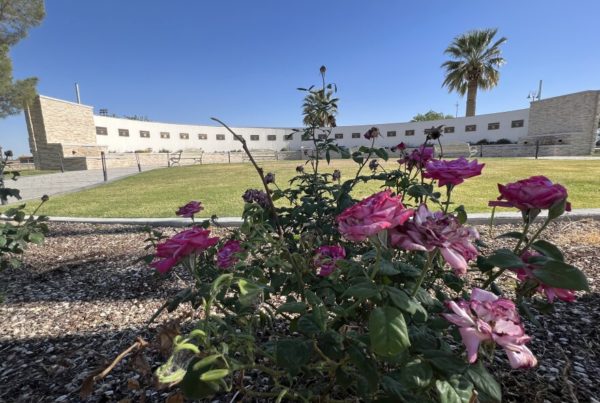From Texas Tech Public Media:
Ogallala Greens is home to some of the freshest produce in West Texas. The greenhouse in Slaton has rows of vegetables growing – everything from a spicy mizuna mix to crunchy kale.
But it isn’t a typical greenhouse. Ogallala Greens is one of the few hydroponics farms in the region.
“The food here is just not up to snuff,” said Cory Roof, lead grower at Ogallala Greens. “The produce comes into town limp and without nutrition or flavor, and that’s because it spends three weeks on the bed of a truck being moved in here. Lubbock deserves locally-grown produce.”
What makes a hydroponics farm different from others is that it’s focused on water conservation for growing, instead of using traditional methods. Roof said they don’t use soil and they have a 300-gallon tank of nutrient water constantly running through the plants. That may not sound like a water-saving technique, but all the water is recycled through the farm’s 4,000 plants.
Roof explained: “The water gets pumped into a water tower. Then gravity pulls the water out of the water tower and into these little tubes, which feed the channels that our greens are planted in.”
Roof said the system uses up to 95% less water than traditional farming methods. The growers at Ogallala Greens want to bring healthier produce to the region, but Roof said their goal is also to conserve the water they have access to.
Water conservation is a growing concern in Lubbock County. Data from the Texas Water Development Board shows the area’s reservoirs have been slowly declining since hitting a peak in August 2021.
Roof at Ogallala Greens wants to stay ahead of the problem. In the design for their hydroponics farm, the tops of the channels are all six inches higher than the lowest point, creating a trickle-down effect for the water.
“So gravity just slowly pulls the water all the way to the end of the channel, and then drops it off into a return gutter,” Roof explained. “The return gutter just takes the water back and pours it into our nutrient bay. So it creates a loop, all we have to do is lift the water into the water tower and then gravity does the rest.”
» RELATED: In the BBQ capital of Texas, there’s a new facility on the cutting edge of … vegetables
Another concern is the growth in the county, especially as Lubbock itself continues to rapidly expand. However, Lubbock’s City Manager Jarrett Atkinson said water infrastructure is part of their plans.
“Our strategic water supply plans include existing demand, estimated future demand, [and] volumes per person per day,” Atkinson said. “Planning is planning, whether we’re planning for 500 people or 50,000 or 300,000.”
The City of Lubbock does have a 100-year water plan that Atkinson said is secure. The city’s projected growth is accounted for in the plan and, according to Atkinson, Lubbock has one of the lowest per capita uses of water in this part of the state.
“[The water plan] is absolutely still valid, and it’s redone every five years,” he said. “It’s not like we wrote it and we’ll come back in 50 yeras to see how close we got to it. It’s constantly being adjusted.”
Atkinson said there are other ways to help alleviate some of the pressure on the county’s water supply, such as choosing when they want to start big projects and making investments in water. The most successful one so far is Lake Alan Henry, which is 82% full as of Wednesday.
“Lubbock owns all of the water in Lake Alan Henry, it’s entirely for the benefit of the residents of Lubbock,” said Atkinson. “Lake Alan Henry was a phenomenal investment, it’s a tremendous water supply and works exactly like it was designed.”
But even with the supply, Lubbock County is still drought-prone. The area has been in a drought since mid-2020 with little to no relief, and is currently facing exceptional drought conditions, according to the U.S. Drought Monitor.
» RELATED: Many Texas farmers to miss out on record wheat prices as drought intensifies
The current drought has Jason Coleman, general manager of the High Plains Underground Water Conservation District, drawing similar comparisons to the 2011 drought.
“We live in the desert,” Coleman said. “With these periods that look like the one we’re going through right now, people need to be especially mindful of water use conservation. Conservation in this area is very important.”
Coleman said the county is fortunate that there are long-term investments in water, but that anything can happen.
“These things can be rather fragile,” Coleman warned. “If you have a water supply line that has some kind of catastrophic failure, all of a sudden, we don’t have water for a period of time.”
He added: “No one wants to go without because the fact of the matter is we can’t function without water.”














